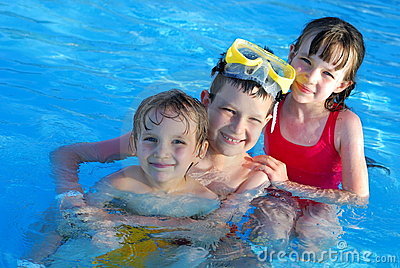Toddlers, children and teens love water as recreation – as do adults and families. As summer approaches, the number of children that are “in” the water – pools (big and small), spas, rivers, lakes and the ocean – increases. How can we assure that the enjoyment of water activity is balanced with being safe? Most parents may not realize how easy it is for a child to be a victim of a drowning accident, how quickly it can happen, how common it is, and how much diligence it takes to prevent these accidents from happening. Water safety is one of the MOST important safety measures for parents to take seriously (just as we do automobile safety), because the consequences can be devastating. A young child is 14 times more likely to die in a pool than in an automobile.
- Most drownings occur WITH adults around. In preschoolers, 70% of all drowning incidents occur when children are in the care or one or both parents.
- Infants can drown in very shallow water (bathtubs, buckets), the #1 type of drowning for children under one year of age.
- There is no substitute for a parent being IN the water within an arm’s length distance from a child who cannot swim. “Floaties” and other assistance devices may increase enjoyment, but don’t necessarily increase safety. Such toys or devices are not a life jacket, can slip off, and can also entrap a small child under the water or in a dangerous position.
- Don’t assume that other adults are “supervising” your child – unless they are specifically tagged to do so and are “on” all the time.
- Childhood drowning can happen quickly – it only takes a slightly open door or turn of the head because of distraction.
- Provide swimming lessons for your children – but understand that they also need to be physically and developmentally able to understand water safety. This milestone may not be reached until a child is age 4.
- Infant/Toddler “swimming lessons” are not a complete safeguard against drowning, however, new evidence shows that children ages 1 to 4 may be less likely to drown if they have had formal swimming instruction. Nevertheless, parents should not have a false sense of security regarding drowning risks and these younger children. Swimming skills are from different than water-safety skills.
- For teens, the dangerous combination is alcohol and water, head trauma and water, or alcohol and head trauma and water. Parents should have a specific discussion with their adolescent children about this concern.
- Safety measures at your home or homes that you visit (friends and family) are not complicated, and it is not presumptuous to inquire about what types of safety measures (gates, alarms, lockable covers) exist at a home where your child is staying.
- Don’t drink alcohol while you are swimming or are supervising children who are in the water.
- Hot tubs and spas have the same inherent risks.
We want children to enjoy the water and water activities and for parents to feel as though their children are safe when they are participating in all of the fabulous water recreation and activities that we have available in the San Diego area. The AAP (American Academy of Pediatrics) does have a policy statement and recommendations regarding water safety. You can search the AAP website (www.aap.org or www.healthychildren.org) or combine the search terms “AAP” and “water safety.” Good websites to access information are also www.poolsafely.gov, which is produced by the Consumer Product Safety Commission, as well as www.cdph.ca.gov (search under “pool” or “drowning”).



